Leigh Clark
LGBTQ-AI? Exploring Expressions of Gender and Sexual Orientation in Chatbots
Jun 03, 2021Abstract:Chatbots are popular machine partners for task-oriented and social interactions. Human-human computer-mediated communication research has explored how people express their gender and sexuality in online social interactions, but little is known about whether and in what way chatbots do the same. We conducted semi-structured interviews with 5 text-based conversational agents to explore this topic Through these interviews, we identified 6 common themes around the expression of gender and sexual identity: identity description, identity formation, peer acceptance, positive reflection, uncomfortable feelings and off-topic responses. Chatbots express gender and sexuality explicitly and through relation of experience and emotions, mimicking the human language on which they are trained. It is nevertheless evident that chatbots differ from human dialogue partners as they lack the flexibility and understanding enabled by lived human experience. While chatbots are proficient in using language to express identity, they also display a lack of authentic experiences of gender and sexuality.
What Do We See in Them? Identifying Dimensions of Partner Models for Speech Interfaces Using a Psycholexical Approach
Feb 03, 2021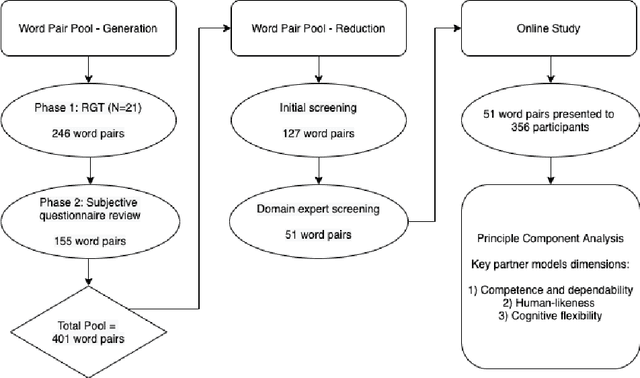
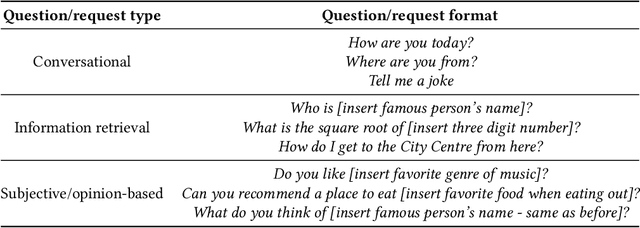
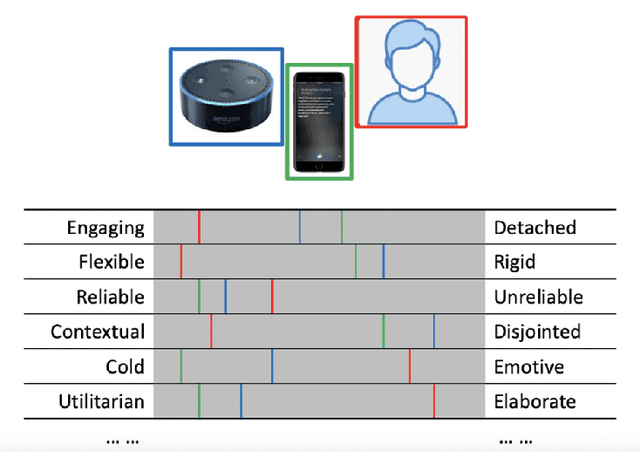
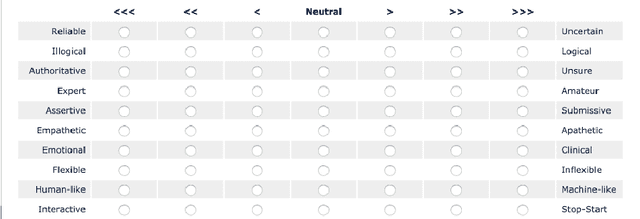
Abstract:Perceptions of system competence and communicative ability, termed partner models, play a significant role in speech interface interaction. Yet we do not know what the core dimensions of this concept are. Taking a psycholexical approach, our paper is the first to identify the key dimensions that define partner models in speech agent interaction. Through a repertory grid study (N=21), a review of key subjective questionnaires, an expert review of resulting word pairs and an online study of 356 user of speech interfaces, we identify three key dimensions that make up a users' partner model: 1) perceptions toward competence and capability; 2) assessment of human-likeness; and 3) a system's perceived cognitive flexibility. We discuss the implications for partner modelling as a concept, emphasising the importance of salience and the dynamic nature of these perceptions.
Mental Workload and Language Production in Non-Native Speaker IPA Interaction
Jun 11, 2020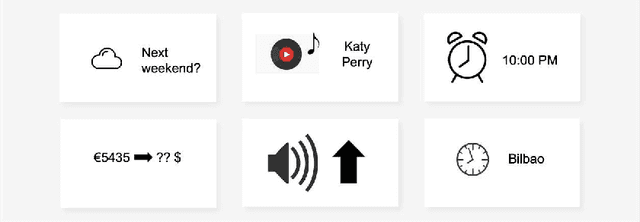

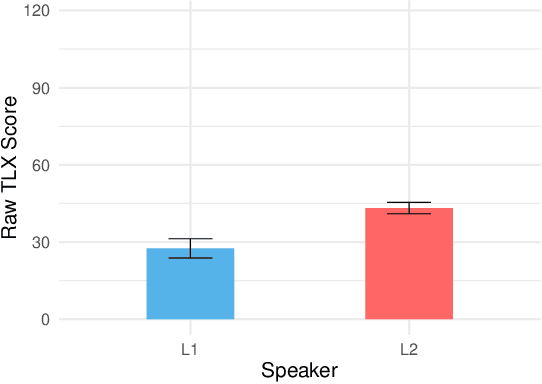
Abstract:Through proliferation on smartphones and smart speakers, intelligent personal assistants (IPAs) have made speech a common interaction modality. Yet, due to linguistic coverage and varying levels of functionality, many speakers engage with IPAs using a non-native language. This may impact the mental workload and pattern of language production displayed by non-native speakers. We present a mixed-design experiment, wherein native (L1) and non-native (L2) English speakers completed tasks with IPAs through smartphones and smart speakers. We found significantly higher mental workload for L2 speakers during IPA interactions. Contrary to our hypotheses, we found no significant differences between L1 and L2 speakers in terms of number of turns, lexical complexity, diversity, or lexical adaptation when encountering errors. These findings are discussed in relation to language production and processing load increases for L2 speakers in IPA interaction.
See what I'm saying? Comparing Intelligent Personal Assistant use for Native and Non-Native Language Speakers
Jun 11, 2020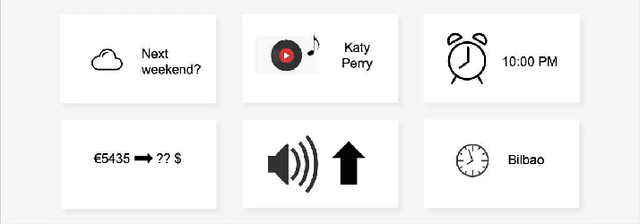

Abstract:Limited linguistic coverage for Intelligent Personal Assistants (IPAs) means that many interact in a non-native language. Yet we know little about how IPAs currently support or hinder these users. Through native (L1) and non-native (L2) English speakers interacting with Google Assistant on a smartphone and smart speaker, we aim to understand this more deeply. Interviews revealed that L2 speakers prioritised utterance planning around perceived linguistic limitations, as opposed to L1 speakers prioritising succinctness because of system limitations. L2 speakers see IPAs as insensitive to linguistic needs resulting in failed interaction. L2 speakers clearly preferred using smartphones, as visual feedback supported diagnoses of communication breakdowns whilst allowing time to process query results. Conversely, L1 speakers preferred smart speakers, with audio feedback being seen as sufficient. We discuss the need to tailor the IPA experience for L2 users, emphasising visual feedback whilst reducing the burden of language production.
 Add to Chrome
Add to Chrome Add to Firefox
Add to Firefox Add to Edge
Add to Edge